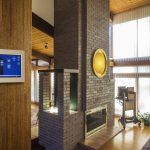
How Your Heat Pump Uses Heat Strips
If you have a heat pump, you might be aware that you should avoid using the emergency heat setting on your thermostat. You might have been warned not to use this setting because it uses electric heat strips to heat your home, which are not nearly as energy efficient as your heat pump’s normal function. While you shouldn’t have to choose the emergency heat setting (except in actual emergencies), it is OK for your heat pump to occasionally use heat strips.
To understand why your heat pump uses heat strips, you’ll first need to understand how your heat pump works. Simply put, heat pumps operate by harnessing warm air present in the air outside your home. As outside air is pulled in to your heat pump, liquid refrigerant draws the heat out of the air, converting it to hot vapor. That heat is then distributed throughout your home.
Because heat pumps work by pulling heat from the air outside your home, the colder (specifically, temperatures below 40 degrees) that air is, the more difficult it is for your heat pump to operate this way. So, in addition to this heating method, most heat pumps use strips of electric heating coils as an auxiliary heating source if the unit is not able to convert the outside air quickly or efficiently enough. Heat strips are wire elements in your unit that are heated by electricity, which in turn heat the air that flows over them.
Heating air using heat strips requires much more energy, but your heat pump relies on these strips to perform certain tasks, such as defrosting your unit. But, even though it’s unavoidable (and sometimes necessary) for your heat pump to use the heat strips occasionally, there are things you can do to prevent your heat pump from using them frequently.
Keep your thermostat set at 68 degrees
It’s recommended that you keep your thermostat at 68 degrees in the winter; each degree you heat your home above 68 can add as much as four percent to your utility costs. Keeping your house at a lower temperature will reduce the amount of heat your heat pump has to create, thereby reducing the need to rely on heat strips.
If your home is well-insulated, keeping the thermostat at a low, regulated temperature should prevent you from using your heat pump excessively. It’s also recommended that you lower the thermostat to 65 degrees while you’re asleep or if you’ll be out of the house for at least four hours, preventing your system from producing additional heat while you’re not there to enjoy it.
Raise your thermostat temperature gradually
If you’ve lowered the temperature of your house while asleep or away from your home, warm your house slowly when you return. Do not raise the thermostat more than two degrees at a time. Your home comfort system is going to do whatever it can to bring your house to your desired temperature as quickly as possible. If the task is too much for the heat pump’s normal function, it may rely on the heat strips as an auxiliary heating source. Bringing your house up to temperature slowly will ensure that your heat pump is able to draw the necessary heat from the outside air instead of using the heat strips.
Do not use the emergency heat setting
You might be wondering, if your heat pump uses these auxiliary heat strips regardless, why is the emergency heat setting there at all?
The emergency heat setting is there, as the name suggests, for emergencies, when your heat pump isn’t working properly. Switching to the emergency heat setting forces your heat pump to bypass the method it typically uses to produce warm air and instead rely solely on heat produced by the heat strip coils.
This setting should be used only if there is something wrong with your heat pump, and even then, only as a short-term fix until you can have the system repaired. While using the emergency heat setting will heat your home, because it requires much more energy to operate, it’s much costlier, and will cause your utility bill to increase. Repairing or replacing your heat pump instead of relying on the emergency heat will save you time and energy (literally) in the long run.
If you suspect your heat pump might not be working properly, make sure the problems you’re having aren’t just normal signs of use. If you’re still worried, or just not sure, contact Barineau Heating and Air Conditioning to set up an inspection, or give us a call at 850-580-4029.




